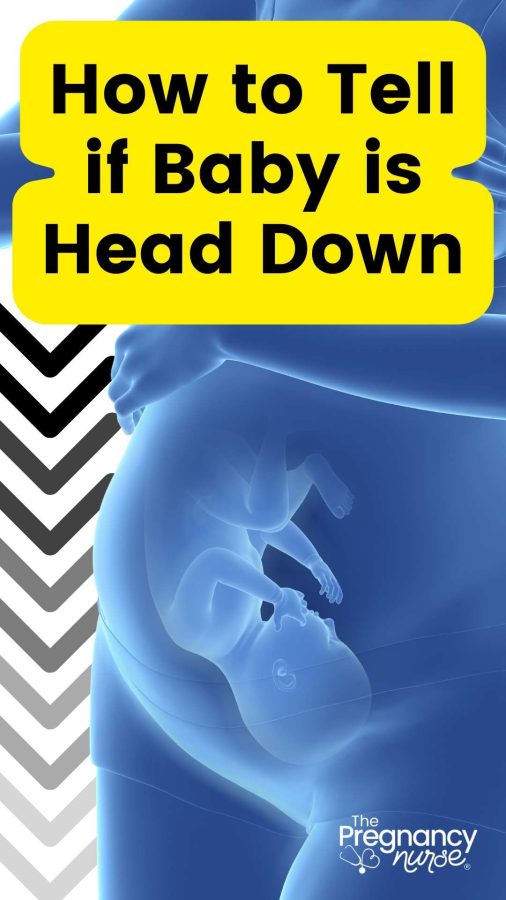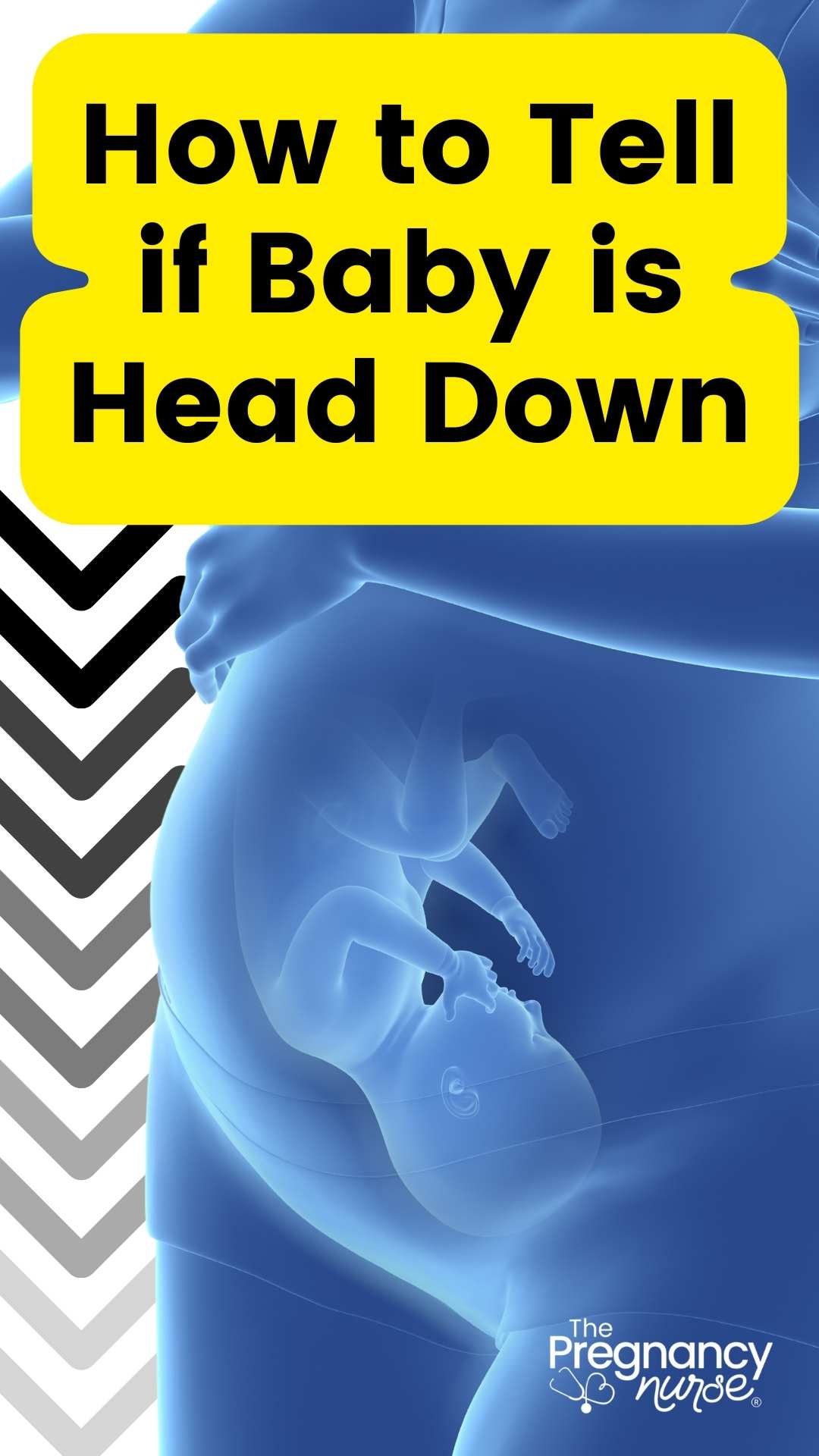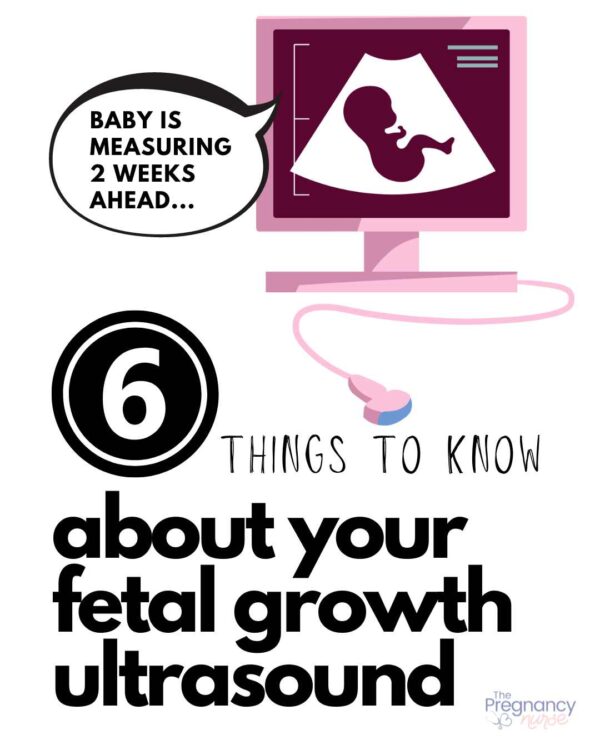Maybe you’ve heard that most doctors don’t offer a vaginal delivery if baby is not head down. There are a few ways to tell including Leopold’s maneuvers, heart rate placement and more — so let’s talk about how you can tell!

BTW, one of the best ways to know where your baby is to get familiar with them. Kick counts is a GREAT time to do that (and your best indicator of baby’s well-being). Grab my cheat sheet here:
Here are five ways you can tell if baby is head down:
- Ultrasound – this is the gold standard!
- Baby’s heart rate placement
- Leopold’s maneuvers (sometimes also called baby mapping)
- Vaginal exam
- Where Kicks are
Remember, it’s not really just head down (vertex) or bum down (breech) — baby can be in other positions in the womb as well where the head is off to the side or actually directly horizontal in the womb (this is less common).
This is a great conversation to have with your provider.
Pro Tip: Have a note on your phone with things you want to talk with them about at your next appointment. This allows you to remember all those little questions you have along the way and also make the appointment efficient for them.
So, let’s talk about each of the ways you can tell:
How to tell Baby’s position in the Womb:
Remember that the best position for a vaginal birth is head down (called Vertex). Most providers will not deliver a breech baby vaginally (due to inexperience with it, and malpractice insurance issues).
Ultrasound
This is the gold standard as you can tell exactly which part is facing towards the cervix. It isn’t difficult to do, but does require an ultrasound machine. As a nurse I am not “formally” allowed to do this and decide presenting part but sometimes we haul it in just to reassure ourselves if something else seems off.
Baby’s heart rate placement
This is often our first clue that maybe something is off. If we find baby’s heart rate above your belly button, that may mean that their chest is also in the top part of your uterus. It’s not always the case, often you can get a baby’s heart rate all over the abdomen but it usually makes your provider wonder….
BTW, want some tips on prenatal exam stuff — check out these posts:
- Getting Chiropractic Care During Pregnancy — Should You See A Chiropractor?
- 6 Things Your Provider Does At Prenatal Appointments That Are Important
- 6 Things To Know About Your Fetal Growth Ultrasound
- What STD Tests Are Given To Pregnant Women?
- 27 Weeks Pregnant: Baby Development & Position
Leopold’s maneuvers (sometimes also called baby mapping)
This is where your provider will take their hands and press on your belly to see where baby’s spine, neck and other parts are.
We can also sometimes just look at your belly and feel like something is “off”. Breech baby’s tend to look different than vertex babies. However, depending on your abdominal shape it isn’t always as clear cut for providers.
Leopold’s maneuvers can also tell us how far baby has descended into the pelvis, and sometimes even where the baby is facing. Honestly, it can even be better than an ultrasound in an experienced provider’s hands.
It can be really easy to think that “skills” like that aren’t as good as the technology that seems better. Finding out information about that from an expert can help a lot.
This is something YOU can do also! As you’re sitting/laying with baby press around on your belly to get familiar with where they are at. An awesome thing to do during kick counts!
It’s SO smart to become an expert in YOU! << that will serve you well!
Vaginal Exam
When we do an exam, we are feeling the cervix on top of the presenting part.
If we’re able to get through the cervix (so, you’re more than 1 cm) we can even touch that presenting part. If it’s firm and hard that makes us think it’s a head, if it’s squishy we think it’s a bottom.
A lot of people think that a vaginal exam only shows how open your cervix is, but there really is a LOT that we learn from an exam — including the presenting part. I have a post on when we start doing cervical exams.
Want more tips on vaginal exams, check out these posts:
- Can I Refuse Cervical Checks In Labor? Declining Cervix Exams In Pregnancy.
- What Is Stripping Membranes? (Membrane Sweep)
- What Does the -2 Mean When They Do a Cervical Check?
- Pain After Your Cervical Check: What’s it mean?
- Painful Cervical Checks During Pregnancy
Where Kicks Are
As a pregnant person the only way that YOU can tell is by where baby is kicking. If you feel strong kids towards your lungs that is a good sign — but if you feel baby kicking your bladder or your cervix (OUCH) you have some good signs that maybe baby is not head down.
That being said — this whole thing can be tricky! So, if you are wondering how baby is positioned in the womb, ask your provider at your next appointment!
Oh, and make sure you’re doing those kick counts too like I talked about above:
When should baby be head down?
You may worry that baby is in the breech position as you get closer to your due date.
Most babies are in several positions up until around their third trimester as their heavy head will place them head down. You don’t really need to be concerned until closer to 34 weeks, but if I had a baby that wasn’t head down at 27 weeks I might schedule with a chiropractor as I’ve seen a lot of luck with those. Or, you could check-out Spinning Babies.
I have a whole post on when a baby will turn head down you might find help too!
They can also try an external cephalic version where they try to push baby into the proper position (done by your doctor or your midwife).

My Experience With Baby’s Position
In my 20 years in labor and delivery I’ve definitely seen a lot of breech and transverse babies. I will say that some doctors are better at versions than others (like, surprisingly better) — so, I’d ask your provider what practitioner in your group has the best success rate for versions and use them.
I have also seen a LOT of people have good luck with a chiropractor. So, I think it’s something to consider.
However, if baby has been breech for weeks and has never changed I sometimes think something is keeping baby in the position they’re at. That happened to my friend Rachel and we talked about it on my podcast. You might enjoy the listen if that sounds familiar to you.
I have a whole post on getting baby to flip if that’s something that interests you.
So many patients end up having unrealistic expectations about pregnancy, labor & birth (thank you movies & tv), or even the basics of being in the hospital are too much for them. Having some BASIC understanding about what’s going to happen, common interventions, and how to talk with your team to be sure that YOU are making the choices (not them).
I am SO glad you’re here learning these important bits. You’re clearly one of the smart ones. If you’ve wondered how to get your PARTNER prepped I recommend The Online Prenatal Class for Couples. It’s meant to get BOTH of you prepared quickly (and with a little fun involved).

And, if you’re not quite sure you’re ready for that whole thing, check out my free prenatal class. It’s your first step toward getting in the driver’s seat of your birth.








 4 Signs You’re Almost In Labor
4 Signs You’re Almost In Labor
